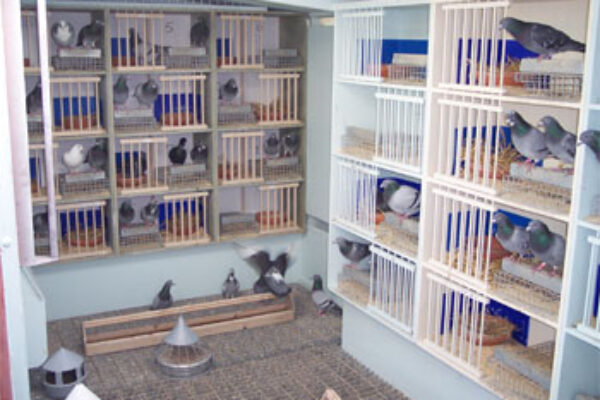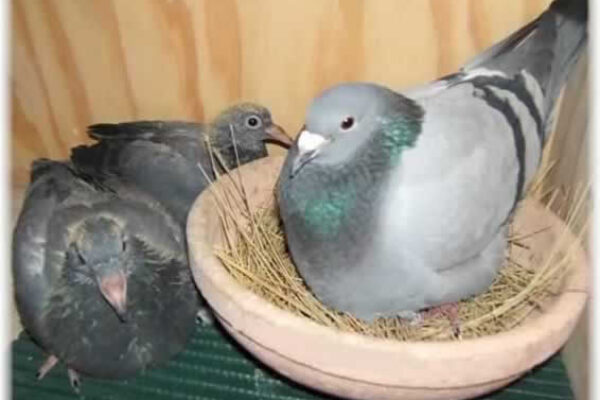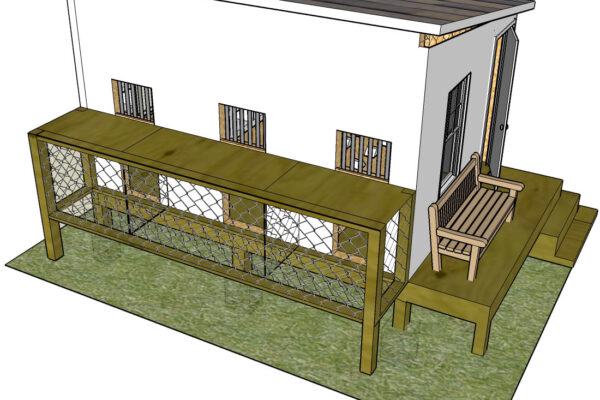Grains, Fuel and Pigeon Racing – Part 4 Daily Schedule
 Daily Schedule
Daily Schedule
Sunday AM: barley
Sunday PM: 60% barley, 40% racing mix
Monday AM: 40% barley, 60% racing mix
Monday PM: 20% barley, 80% racing mix
Tuesday AM: 100% racing mix
Tuesday PM: 70% racing mix, 30% corn and rice
Wednesday AM: 25% racing mix, 75% corn, rice and hemp
Wednesday PM: 10% racing mix, 90% corn, rice and hemp
Thursday AM: 10% racing mix, 70% corn, 10% rice, 10% hemp
Thursday PM: Same as AM
Friday AM and PM: Same as Thursday.
The Widowhood Year by Dave Allen (UK). He feeds birds individually in small pots in their nest boxes. Widowhood mix-45% corn, 25% peas, 10 % wheat, 10% white dari, 5% pellets, 5% safflower.
Saturday- a teaspoon of barley on return from a race: evening- barley with brewer’s yeast.
Sunday– barley with brewer’s yeast all day. Evening 50/50 barley and widowhood mix.
Monday- One feed in the evening-50/50 barley and widowhood mix. (1 1/2 oz. Per bird)
Tuesday– Same as Monday.
Wednesday- Evening- 80% widowhood mix 20% barley. ( 1 1/2 oz per bird)
Thursday- Evening- 100% widowhood mix- no barley.
Friday-morning (shipping day) plenty of widowhood mix. Remove all feed at 1:00 PM.
Belgian racing mix: Light mix (sometimes called a diet mix)-20% barley, 10% white dari (kafir),
10% safflower, 5% rice, 8% paddy rice, 5% buckwheat, 7% red dari, 15% wheat, 5% hulled oats, 3% millet, 3% rapeseed (now called canola, in some areas) 6% flax, 3% hemp. Heavy mix: 35% corn, 12% wheat, 32% peas, 10% white dari, 4% safflower, 5% tares, 2% catjang mango (mung beans).
For an upcoming race of 350 miles.
Sunday: 80% light mix, 20% heavy mix.
Monday: 60% diet mix, 40% heavy mix.
Tuesday: 40% diet mix, 60% heavy mix.
Wednesday and Thursday: 100% heavy mix.
For short races, feed diet mixes more often and heavy mixes less often. For short races, one fancier feeds only the diet mix, with the heavy mix fed the day before basketing. For long races, little or no diet mix is given.
It is important to realize that the foregoing examples are jus that, and they can be modified at will. Be aware that you can substitute one grain in a category for another. For instance, if your favourite yellow or white pea isn’t available, substitute with available green peas: if you are short of corn, substitute with rice, popcorn and wheat, ect. It is also important to understand that the racing rations presented are high in carbohydrates which the liver converts very readily to the fats needed for any sustained flight, whether it is a short training toss or a marathon 500-600-7– mile flight or greater.
For these longer races, it might be a good idea to supplement these high carbohydrate diets with some high fat grains/seeds such as peanuts or sunflower seeds in the last 2-3days before shipping, to add a bit more fat to the reserves. Because it is known that glucose can be converted readily to fat, you can add glucose powder to your drinkers for a day or two, say Tuesday and Wednesday morning (fresh water Wednesday evening), if you are shipping Thursday night. You can also use another sugar-fructose- in the drinking water instead of glucose, because there is a high biological priority in birds to direct fructose to fat production. Honey (about 30% glucose, 40% fructose) could be used instead of either of the sugars mentioned- both sugars and honey are also a good pick-me-up for the birds when they return from a race.
These sugars should be used only for a day or two at a time. Because some bacteria and molds, ect., find them useful as well, in the own life processes. If some of these bacteria are dangerous types, such as the paratyphoid organism or some strains of E. coli, you don’t want to be aiding their growth by overusing these sugars. It’s the same with vitamins- use them in drinking water for only a day or two at a time, for the same reasons.
It is also evident that the level of peas in rations for racing is reduced, but no eliminated. Peas and other high protein grains are reduced in amount and are replaced by greater reliance on grains high in carbohydrates for the racing energy they contain. Peas are just no an energy feed, but as noted, their protein is important for the repair of damaged or degenerated muscle or other tissues. Some damage or degeneration may occur during any race, but logically seems more likely if a race is tough and birds are forced to work extra hard, so some protein should be present in the diet to be used in the repair process.
In addition, we have seen that high levels of protein in a ration will decrease the amount of fat the liver is able to produce. Why in the world would we want to decrease fat production ahead of any race, ince it is the chief fuel for sustained, rapid flight? In another example closer to home, why would we want to put kerosene instead of gasoline in the fuel tanks of our cars? We don’t want to do this, but we do want to provide the best available fuel- gasoline. The emphasis in preparing birds for racing should be a decreased reliance on high protein grains, but a much increased reliance on the high carbohydrate grains (and at some stage, depending on the distance for which we are preparing birds, an increase in some of the high fat grains for a few days). Some protein also appears to be necessary as a source of uric acid which, it seems, may be useful in preventing or reducing the effects of hyperthermia (over heating) during races, especially those flown in very hot weather.
Fanciers have asked about the amounts to be fed per bird during the race season. It seems that in birds, hand feeding a given amount each day results in a greater production of fat for fuel than does open hopper feeding. For the shorter races, somewhere in the area of 1 ounce per bird per day seems adequate. As the distances get beyond 250 miles, perhaps 1-1/4 ounces per day, and beyond 200-350 miles, 1-1/2 ounce per day. On some days, birds will need a bit more if they appear extra hungry for some reason, and on other days, they may need a bit less, but over all, it is still a judgement call by the fancier.
In all cases, birds should remain bouyant and light in the hand, and as form approaches, they should balloon out to appear larger in the hand, but continuing to be as light as feathers. Wattles should be sharply white, or even pink, as circulation improves with improving condition. The eyes should sparkle like diamonds, feathers should be tight and smooth, the breast muscles pink, and the skin clear and free of scales, with tiny blood vessels clearly crossing the keel.
During the last week before shipping, it is the philosophy of some successful fanciers that toward shipping day, especially for the longer races, the amount of heavy exercise/training should decrease, and the amount of feed should correspondingly increase. This seems to make a lot of sense. Why build up fat reserves for the race, especially a long race, if you are just going to burn it all off by training during the few days before shipping, thereby alternately building fuel reserves (fats) on the one hand, and then burning them off through excessive work, on the other hand? It’s something to think about. It would be like fueling the car for a long trip, only to use most of that fuel by driving around town at high speed, before leaving on that long trip. Result: the tank is empty or low in fuel, and more fuel is now needed to handle that long trip.
It is also the view of some of my veterinary colleagues who also race pigeons that, during the last couple of days before shipping, the birds should be provided with fresh water only-no additives of any kind. The idea is to avoid giving them anything that might induce unwanted thirst in the transporter on the way to the race point. Something else to think about.
I understand that some fanciers, past and present, have the idea that any amount of fat is a hindrance, and that it is important to strip the birds right down to eliminate this unwanted fat, (to be replaced with what, I would ask? I continue to wonder what they believe the birds use for fuel in the first place!) True, excessive fat is a definite hindrance, but as fat is certainly the fuel on which birds race from short to long distance, this idea of stripping birds right down in weight is completely unwarranted, and not in keeping with the established facts about fuel requirements. I believe that birds for the shorter races need to be somewhat lighter in weight than those for the longer races, but the point is that all of them use fat as the fuel on which to race any distance.
Another point: I think it is important not to ship birds to a race with a full crop of feed. If we have been feeding the birds correctly up to shipping day, by that time they should be sell prepared nutritionally, so it’s really not necessary to pack them with feed late in the afternoon of shipping day. Loading the birds with feed simply invites unwanted thirst, and if they don’t know how to drink in the transport truck, or if water isn’t provided, birds will suffer unnecessarily. As well, it has been found that birds kept off feed for up to 72 hours load their breast muscles with fat, so if they don’t get a good feed late on shipping day, there should be no further concern about them, as long as they have been well nurtured up to that point.
A few more points-birds should be fed in the transport truck late afternoon of the day before release, and the feeders removed before nightfall. Definitely they should not be fed on the morning of release, again because of the problem with unnecessary thirst during the race. The birds should be watered the night before and on the morning of release, without fail. (Fanciers also need to teach their youngsters how to drink in the transport truck.).
It’s likely a contentious point, but the amount and kind of feed to provide in the transport truck is also important. Birds likely don’t need more feed than about 1/2- 1 ounce (maximum) per bird the night before release. For a holdover, likely 1 ounce per bird per day is enough-remember, these birds should have been well prepared nutritionally, well before they were shipped!
Based on the facts, the grains to be fed in the transport truck should be the cereal grains only-corn, wheat, rice, ect.. In many cases, the main feed given is straight corn, which is just fine. The birds need the energy grains just mentioned, but not peas. (They likely won’t eat many of them anyway, as long as they have the choice of cereal grains, the most desirable feed.) As mentioned a number of times now peas are not an energy feed, and the birds need energy for the race ahead- hence, the value of the cereal grains, especially corn, to help accomplish this.
I am also aware that the subject of feeding large amounts of peas to pigeons is an article of faith to a number of Aussie and British fanciers, but information on the role of grains high in carbohydrates as presented her, is based on scientific fact. I understand why tradition and traditional views die hard. As I mentioned to an Adelaide (Australia) fancier who issued a friendly challenge during my seminar there, it was not my wish to tell fanciers what to do, but that I merely wanted to present facts that thinking fanciers could accept of reject, as they pleased.
In closing this article, it is my sincere hope that the facts (and the opinions I have formed and expressed as an outgrowth of these facts) presented here and in other articles surrounding this whole subject of racing and fuel, will be a means of shedding light on the subject rather than creating heat. Further, it is also my hope that all of this published material will allow the thinking fancier to approach the feeding and breeding of racing pigeons from a factual, practical and scientifically sound point of view.
Grains, Fuel and Pigeon Racing Part 1 – Introduction
Grains, Fuel and Pigeon Racing Part 2 – Protein, Carbs & Fats
Grains, Fuel and Pigeon Racing Part 3 – Suggested Rations
Grains, Fuel and Pigeon Racing Part 4 – Daily Schedule
Grains, Fuel and Pigeon Racing – Feed table
Grains, Fuel and Pigeon Racing – Part 4 Daily Schedule By Gordon Chalmers, DVM
The Leading Online Pigeon Racing and Racing Pigeons Magazine – The Pigeon Insider









I would like a feed program for young birds on the dark system.
HI
Thank you Chris very good information.
Would you tell me about racing mix?
Thank you very much
Hi Chris very good article well done.For those who fly natural in old birds you need a good mix
if you watch your birds depending on where they are in the nest they all eat differently i also
use peanuts they get a few everyday if you are training them i find it will not hurt them Brad.
Really it is a useful article for young fanciers like me. Can anyone tell me about stuffs in barley, sunflower & hemp seeds.
real and scientific…no more secrets,iam gonna use this way of feeding,hooray! thank you so much for info in good and scientific method of feeding.
More thought about my protein question below has led me to expand upon my question.So,if say I feed about 20-30% maple pea’s in my feed mix,and to this I add some pellets which are 15% protein into a basic pigeon feed formula,would the compounds in the maple pea’s that prevent protein being absorbed,be sufficient or strong enough to prevent all the protein in that meal from being absorbed into the birds system rendering the protein wasted or would only a small amount of protein be affected by these compounds.Can anyone help?Only Facts please,no fiction.
Great article series.I really enjoyed that,and learned some stuff also.Interesting about the maple pea’s being a protein food but also containing compounds that prevent the protein from being absorbed.Can someone tell me if this is scientific fact that has been proven,or is it just the belief of some fanciers who dont like to feed maples.I have been a real believer in the maple pea especially during breeding season,and the birds seem to prefere them as the main choice of their diet during feeding young.Thanks.
hi, it’s really nice reading your article about feeds for pigeon racing. my question is, i’ve heard of fanciers adding oil (peanut or olive oil) to the mix, does this really helps and how the bird will process it? cheers!
Hey Martin,
Here’s two articles that you may find interesting and may help you out,
http://pigeonracingpigeon.com/2010/12/15/raw-peanuts-an-important-part-of-a-racing-pigeons-diet/
http://pigeonracingpigeon.com/2011/01/02/pigeon-feeding-schedule-utilizing-raw-peanuts/
Hope it helps you out some.
Yours in the sport,
-Chris
http://www.pigeonracingpigeon.com
Chris
Thanks for the information. I have sugggested in the past that there is a problem to myself in the feddback being a minimum of 7 years old; nothing more recent.
Can you explain?
Hi, Tony.
I’m not sure i understand the question: What feedback are you referring to?